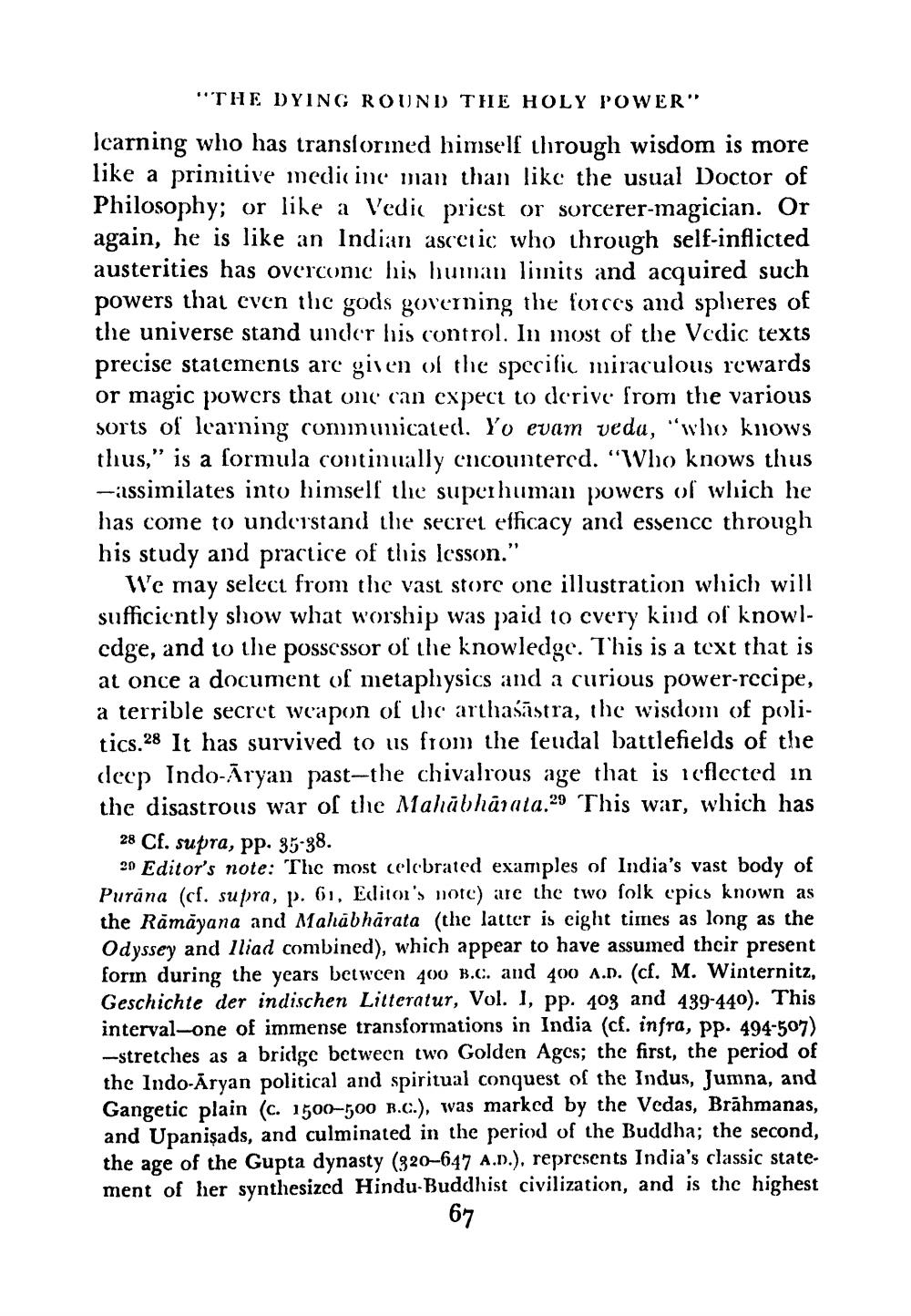________________
"THE DYING ROUND THE HOLY POWER"
Icarning who has transformed himself through wisdom is more like a primitive medicine man than like the usual Doctor of Philosophy; or like a Vedic priestor sorcerer-magician. Or again, he is like an Indian ascetic who through self-inflicted austerities has overcome his human linnits and acquired such powers that even the gods governing the forces and spheres of the universe stand under his control. In most of the Vedic texts precise statements are given of the specific miraculous rewards or magic powers that one can expect to derive from the various sorts of learning communicated. Yo evam vedu, "who knows thus," is a formula continually encountered. "Who knows thus -assimilates into himself the superhuman powers of which he has come to understand the secret efficacy and essence through his study and practice of this lesson."
We may select from the vast store one illustration which will sufficiently show what worship was paid 10 cvery kind of knowlcdge, and to the possessor of the knowledge. This is a text that is at once a document of metaphysics and a curious power-recipe, a terrible secret weapon of the arthaśāstra, the wisdom of politics.28 It has survived to us from the feudal battlefields of the deep Indo-Aryan past-the chivalrous age that is reflected in the disastrous war of the Mahābhārata.29 This war, which has
28 Cf. supra, pp. 35-38.
20 Editor's note: The most celcbrated examples of India's vast body of Purana (cf. supra, p. 61, Editor's note) are the two folk cpics known as the Rāmāyana and Mahābhārata (the latter is eight times as long as the Odyssey and Iliad combined), which appear to have assumed their present form during the years between 400 B.C. and 400 A.D. (cf. M. Winternitz, Geschichte der indischen Litteratur, Vol. I, pp. 408 and 489-440). This interval-one of immense transformations in India (cf. infra, pp. 494-507) -stretches as a bridge between two Golden Agcs; the first, the period of the Indo-Aryan political and spiritual conquest of the Indus, Jumna, and Gangetic plain (c. 1500-500 B.C.), was marked by the Vedas, Brāhmanas, and Upanişads, and culminated in the period of the Buddha; the second, the age of the Gupta dynasty (320-647 A.D.), represents India's classic statement of her synthesized Hindu-Buddhist civilization, and is the highest
67




